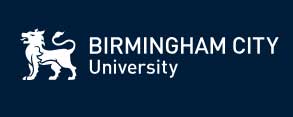Design courses
Birmingham City University

Duration : 1 Years
Intake : september
IELTS : 7.0
TOEFL : 100
PTE : 58
Level : Postgraduate
Tuition & fees : £ 13,200 Per Year
Birmingham City University Contact Details
1 Pace Plaza, New York, NY, 10038, USA
Email: intlgradadmission@pace.edu
Phone: +18667223338
About Design And Visualisation - MA in Birmingham City University
Design and visualisation plays a key role in many of today’s businesses and organisations. From designing complex animations, brand identity, 3D products, virtual interiors, landscape, architectural visualisation and new conceptual designs, employers look for graduates with creativity and knowledge-based software skills.
You can choose to study from a variety of cross disciplinary MA modules in which to learn how to apply design visualisation techniques and strategies. Choose from areas such as product design, interior design, graphic design and various other specialisations.
This course will enable you to further develop your skills and competencies as a 3D design visualiser with an understanding of the design process. You will be taught how to make important critical decisions, how to devise visualisation strategies, design methods and how to use these skills across a range of disciplines.
You will learn how to evaluate, choose and apply relevant theories, concepts and techniques to the solution of design and the knowledge that underpins it. This knowledge and the transferable skills you will develop will help you to succeed in a competitive industry.
You will have the opportunity to engage with Live Projects within the curriculum, offering unique opportunities to experience working on real projects for real clients. The learning objectives place emphasis on the process of development, rather than just focusing on the final outcome. Importance is placed not only on design quality but also on engagement practice, creative participation and how the design is developed.
The programme incorporates frameworks for reviewing, reflecting, analysing and critiquing existing designs and techniques. You’ll graduate with a solid understanding of design visualisation, as well as how to apply different visualisation techniques to different situations.
Academic qualification equivalents
- Bachelors degree - (Pass) in a related subject
English language requirements (one of the below):
- An IELTS score of 7.0
- A TOEFL score of at least 600 (paper-based test) / 100 (internet-based test) / 250 (computer-based test)
- PTE score 50-58
Birmingham City University Highlights
| Institution Type | Public |
| Student Population | 25,800 |
| FAFSA Code | G12215 |
| Application Cost | 20-26 GBP for UCAS |
| Accreditation | ACCA, CIMA, RIBA, and, many others |
| Average Cost of Attendance | 18,086.5-27,575.5 GBP |
Birmingham City University Average Tuition fees and Other Expenses
This figure is an estimate of the basic living costs during the first nine months of studies, which covers most expenses including average tuition fees.
| Items | Amount per annum in GBP |
|---|---|
| Tuition and fees | 5,700-13,200 |
| Accommodation | 5,483-7,013 |
| Food | 2,600 |
| Books and supplies | 450 |
| Utilities like gas, laundry, electricity, etc | 2,355 |
| Transportation | 390 |
| Leisure/social activities | 600-960 |
| Miscellaneous such as TV license, telephone cost, police registration, subscriptions, etc | 490.5 |
| Insurance | 15-117 |
| Total | 18,086.5-27,575.5 |
Know more about Studying in USA
| Tuition Fees in USA (1st Year Average) | BE/Btech: USD 28300 | MS: USD 22693 | BBA: USD 26616 | MBA: USD 29558 | BSc: USD 29418 | MA: USD 20452 | MIS: USD 22133 | MFin: USD 37683 | MEng: USD 29558 | MIM: USD 35301 | MEM: USD 23254 | MArch: USD 34741 | MFA: USD 28857 | BHM: USD 27176 |
| Average Accomodation & Food Costs in USA | USD 700 to 1000 Per Month |
| Entrance Exams in USA | TOEFL: 86 | IELTS: 6.5 | PTE: 60 | GRE: 309 | GMAT: 560 | SAT: 1177 |
| Work and Study in USA | Permitted for 20 hours/week with a valid study permit. Know More |
| Post Study Work Permit in USA | One to Two Years after graduation depending on the course. |
| Cost of Student Visa in USA | USD 160 |
| Student Visa in USA | F1 Visa for USA allows you study permit in USA in full time academic courses. Any accredited school, college, university, academic institute, seminary, or conservatory in USA must accept you beforehand to apply for F1 visa in USA. Know More |
| Intakes in USA | There are Three Intakes in USA: Fall (August-September), Spring (January) Know More |
| Top Job Sectors in USA | Health Care, Education, Construction, Hospitality & Tourism, Business Services, Finance. |
| Economy in USA | GDP Growth of 2.1% (Q4 2019), The Larges Economy of the World by Nominal |